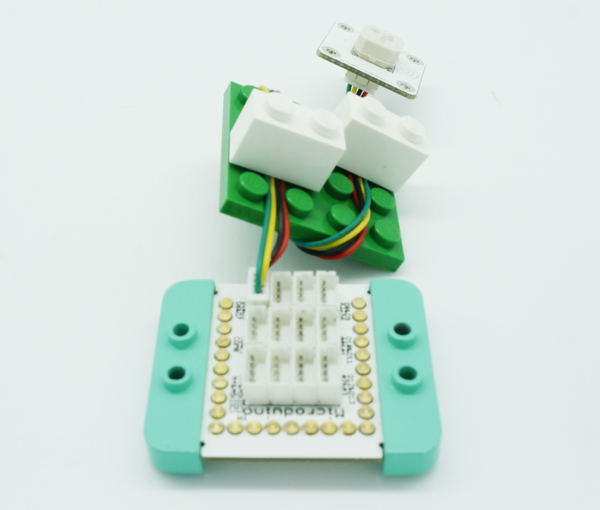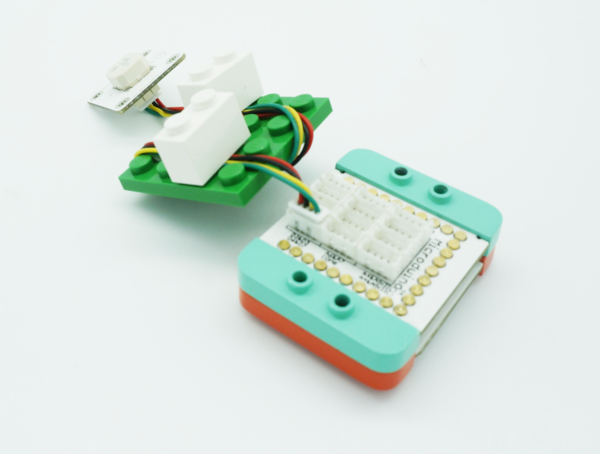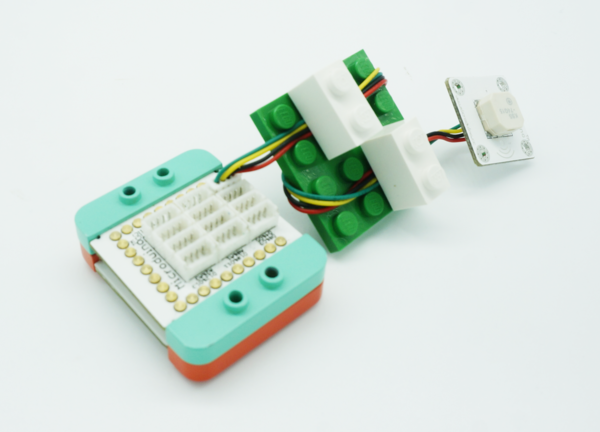Difference between revisions of "Buzzer Alarm"
(Created page with "{| style="width: 800px;" |- | ==Purpose== This coure will show you the way to use Microduino buzzer to play music. ==Equipment== *'''Microduino-CoreUSB''' *'''Microdu...") |
|||
| Line 4: | Line 4: | ||
==Purpose== | ==Purpose== | ||
| − | This | + | This course will show you how to use Microduino buzzer to play simple songs. |
==Equipment== | ==Equipment== | ||
| Line 12: | Line 12: | ||
*Other Hardware Equipment | *Other Hardware Equipment | ||
| − | **USB cable | + | **1x USB cable |
==Buzzer Description== | ==Buzzer Description== | ||
| − | Buzzer includes active buzzer and passive buzzer. Active buzzer has polarity like LED | + | Buzzer includes active buzzer and passive buzzer. Active buzzer has polarity like LED diodes, whose long pin connects to VCC and the short pin to GND. With that connection, active buzzer can make continous sounds. The passive buzzer has no polarity. With three pins consisting of two power pins and an audio input pin, the passive buzzer can only make sound in audio output circuit. In this experiment, we will use a passive buzzer. |
==Program== | ==Program== | ||
| Line 50: | Line 50: | ||
*Function description | *Function description | ||
| − | The music coming from Arduino board is controlled by tone(). The change of the function can change the | + | The music coming from Arduino board is controlled by tone(). The change of the function can change the rhythm of the music. The code includes two forms—tone(pin, frequency, duration) and tone(pin, frequency). <br> |
| − | ● In the first function, “pin” represents the pin that connects a | + | ● In the first function, “pin” represents the pin that connects to a loud speaker.<br> |
| − | ● If using the sencond function, then you | + | ● If using the sencond function, then you also need noTone() to control the music. |
==Debugging== | ==Debugging== | ||
| Line 70: | Line 70: | ||
==Result== | ==Result== | ||
| − | You can use buzzer to play music. | + | You can use the buzzer to play music. |
Revision as of 10:33, 6 September 2015
PurposeThis course will show you how to use Microduino buzzer to play simple songs. Equipment
Buzzer DescriptionBuzzer includes active buzzer and passive buzzer. Active buzzer has polarity like LED diodes, whose long pin connects to VCC and the short pin to GND. With that connection, active buzzer can make continous sounds. The passive buzzer has no polarity. With three pins consisting of two power pins and an audio input pin, the passive buzzer can only make sound in audio output circuit. In this experiment, we will use a passive buzzer. Program
int song[] ={
262,262,294,262,349,330,
262,262,294,262,392,349,
262,262,523,440,349,330,294,
494,494,440,349,392,349
};
int noteDurations[] = {
4,4,2,2,2,1,
4,4,2,2,2,1,
4,4,2,2,2,2,2,
4,4,2,2,2,1
};
void setup() {
for (int thisNote = 0; thisNote<25;thisNote++)
{
int noteDuration = 1000/noteDurations[thisNote];
tone(8, song[thisNote],noteDuration);
int pauseBetweenNotes = noteDuration *1.30;
delay(pauseBetweenNotes);
noTone(8);
}
}
void loop() {
setup();
}
The music coming from Arduino board is controlled by tone(). The change of the function can change the rhythm of the music. The code includes two forms—tone(pin, frequency, duration) and tone(pin, frequency). DebuggingStep 1: Insert Microduino buzzer to D8 pin of Microduino-Sensorhub. Step 2: Connect your PC with USB cable, download the code and program it to Microduino-CoreUSB. Step 3: Power on and you’ll hear the music. ResultYou can use the buzzer to play music. |


